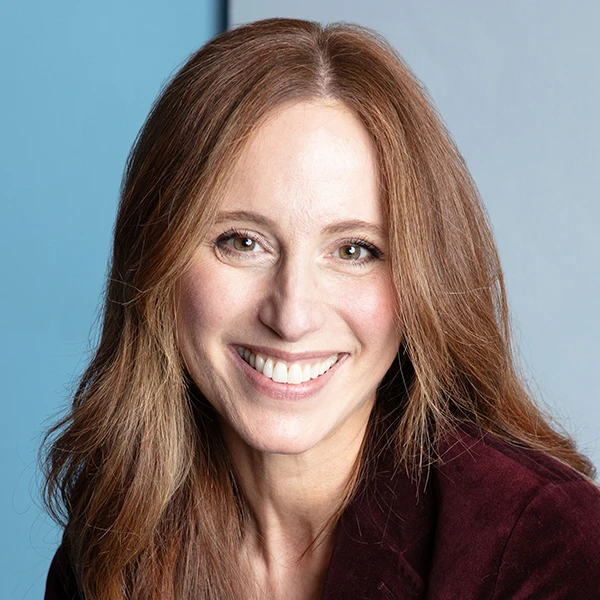Key takeaways:
It’s normal to lose some hair in the shower. But the exact amount varies from person to person. It depends on several factors, such as your hair’s density, texture, and how often you wash.
Someone who washes their hair once a week may notice more hair loss than someone who washes their hair daily. This is because hairs are released over time, and get caught in the bulk of your hair.
If you notice a change in hair loss, such as bald spots or clumps, there may be an underlying medical condition. If you’re concerned, it’s a good idea to get advice from a dermatologist.
You may not have thought about it before, but your hair has a life cycle. One stage in this life cycle is shedding. So it’s very normal to shed hair every day.
Your hair sheds throughout the day, including during brushing — and even sleeping. But hair loss can be particularly noticeable in the shower. So how do you know if you’re losing a normal amount?
Let’s take a look at hair loss, how to minimize it, and learn when there may be cause for concern.
How much hair is normal to lose in the shower?
There’s no straightforward answer to how much hair is normal to lose in the shower. What’s “normal” varies from person to person. How much hair you’ll lose in the shower depends on several factors, such as:
Hair density (how many hairs you have per square inch of scalp)
Hair thickness (the width of the strands)
How often you wash your hair
How often you brush your hair
That said, it’s normal to lose up to 100 hairs a day, according to Dr. Megan Couvillion, a board-certified dermatologist with a subspecialty in hair loss. “But not all of the hair that’s being released from the scalp is going to come out in the shower,” she said.
What causes hair loss in the shower?
Shedding in the shower is normal when you shampoo your hair. But, Couvillion said, it’s not the washing that causes hair loss.
“Showering typically is not increasing the release of hair from the scalp,” Couvillion said. Rather, hairs are released over time, and get caught in the bulk of your hair, she said. The shower happens to be the place where those hairs come out.
In addition to hair that sheds as part of its normal life cycle, other common causes of hair loss include:
Stress
Hormonal conditions, such as polycystic ovary syndrome (PCOS) and congenital adrenal hyperplasia (CAH)
Hormonal changes caused by childbirth, menopause, or hypothyroidism
Aging
Certain hair products and treatments
Nutritional deficiencies, including vitamin D, vitamin B, iron, and zinc
Read more like this
Explore these related articles, suggested for readers like you.
There are also many medical conditions that can lead to hair loss. Some examples include:
Acute illnesses, like COVID-19
Medications can also cause hair loss as a side effect. Examples of these include:
Some antidepressants
Some blood pressure medications
Certain anticonvulsants used to treat and prevent seizures
Ozempic, Wegovy, and other semaglutide medications for Type 2 diabetes and weight loss
Chemotherapy
It’s important to keep in mind that many more conditions and medications can cause hair loss beyond the ones listed above.
What to eat for hair growth: Your diet can affect the health of your hair, especially if you’re not getting enough biotin, protein, and other nutrients. These foods might help your hair growth.
Is your shampoo causing shedding? It’s possible. Learn about shampoo ingredients and brands that may cause hair loss and scalp irritation.
Premature grays: Do you feel too young to be going gray? There’s a wide range of normal. But it could be stress, a medical condition, or a vitamin deficiency.
How to reduce hair shedding
While shedding hair is normal, it can also be stressful. Over-the-counter (OTC) and prescription hair-loss treatments may be appropriate for some people, depending on the cause of their hair loss. But in many cases, it’s worth making a few lifestyle and diet changes to see if it reduces the amount of hair you’re losing.
Foods
The foods you eat can play a role in the health of your hair, especially if you’re missing any key nutrients from your diet.
Nutrients that may be particularly important for hair growth include protein, biotin, healthy fats, and iron. So foods that contain these nutrients may help with hair growth — and will also benefit overall health. Some of these foods include:
Eggs
Avocado
Yogurt
Fatty fish, like salmon and mackerel
Nuts, like cashews, walnuts, almonds, and peanuts
Soybeans
Sweet potato
Natural remedies
An advantage to natural hair-growth products is that they don’t come with the side effects that some prescribed hair-loss products have. The two natural hair-growth remedies with the most evidence to support their use are:
Caffeine: When applied topically, caffeine may stimulate the hair follicles to promote new hair growth.
Melatonin: In people with a type of hair loss called androgenetic alopecia (male pattern baldness), melatonin applied to the scalp may slow hair loss and increase hair density. But more research is needed to better understand how melatonin helps with hair loss.
Other treatments that may help some people include:
Vitamins and supplements: If your hair loss is due to vitamin deficiency, supplements may help with hair growth. It’s always a good idea to talk with your dermatologist, who can order blood tests to determine whether you’re deficient in any vitamins.
Scalp massage: Some limited research suggests that scalp massage may help lead to thicker hair. It may be that scalp massage leads to hair growth by increasing blood flow to the scalp.
Daily hair care and styling
Paying attention to the way you treat your hair day to day can improve the overall health of your hair, and may decrease hair loss. Try to:
Limit or avoid highlighting or coloring your hair.
Limit heat styling and chemical styling; when you do apply heat to your hair, use low-heat settings.
Use quality conditioners to keep dry hair moisturized, and apply leave-in conditioner or detangler regularly to minimize breakage.
Avoid pulling your hair back into tight buns, ponytails, or cornrows.
Wrap wet hair in a microfiber towel to start the drying process (which can reduce blow-drying time).
Brush and comb your hair gently to avoid pulling.
When should you be worried about hair loss in the shower?
Seeing a pile of hair in the shower can be unsettling. Signs that it may be a good idea to check in with a dermatologist include:
An uptick in hair loss
Bald spots
Hair loss that’s not improving on its own
Loss of hair in clumps
A dermatologist can run tests and diagnose the underlying cause of your hair loss, then recommend treatment options.
“I tell my patients to ask themselves, ‘Am I having an increase in the amount that’s coming out without changing how frequently I’m showering, or the amount of brushing?’” Couvillion said.
“While it can be normal to lose up to 100 hairs a day, each person’s norm may vary,” she added. “So I recommend looking at the overall pattern of your hair rather than counting hairs.”
Frequently asked questions
Physical or emotional stressors — such as an infection with high fever, or childbirth — can trigger acute hair loss. Stress-related hair loss is called telogen effluvium. Usually there’s a delay of several months between the stressor and the onset of the shedding, making it difficult to detect the cause.
A dermatologist can help you determine the cause of hair shedding and can tell you if you need treatment or if the hair will regrow on its own.
Physical or emotional stressors — such as an infection with high fever, or childbirth — can trigger acute hair loss. Stress-related hair loss is called telogen effluvium. Usually there’s a delay of several months between the stressor and the onset of the shedding, making it difficult to detect the cause.
A dermatologist can help you determine the cause of hair shedding and can tell you if you need treatment or if the hair will regrow on its own.
The bottom line
It’s normal to lose up to 100 hairs a day. But how much hair is normal to lose in the shower varies from person to person depending on hair type and frequency of hair washing. But showering doesn’t cause hair loss. Instead, hairs are released over time, and get caught in the bulk of your hair. Then those hairs come out in the shower.
If you notice that you’re losing more hair than usual, you may want to talk with a dermatologist. They can run some tests and see if there’s something else going on. Just keep in mind that a stressful event, like an illness or trauma, can cause hair loss even months after the fact.

Why trust our experts?



References
Alonso, L., et al. (2006). The hair cycle. Journal of Cell Science.
American Academy of Dermatology Association. (n.d.). Hair loss: Tips for managing.
English, R. S., Jr., et al. (2019). Self-assessments of standardized scalp massages for androgenic alopecia: Survey results. Dermatology and Therapy.
Fischer, T. W., et al. (2012). Topical melatonin for treatment of androgenetic alopecia. International Journal of Trichology.
Koyama, T., et al. (2016). Standardized scalp massage results in increased hair thickness by inducing stretching forces to dermal papilla cells in the subcutaneous tissue. Eplasty.
Völker, J. M., et al. (2020). Caffeine and its pharmacological benefits in the management of androgenetic alopecia: A review. Skin Pharmacology and Physiology.


















